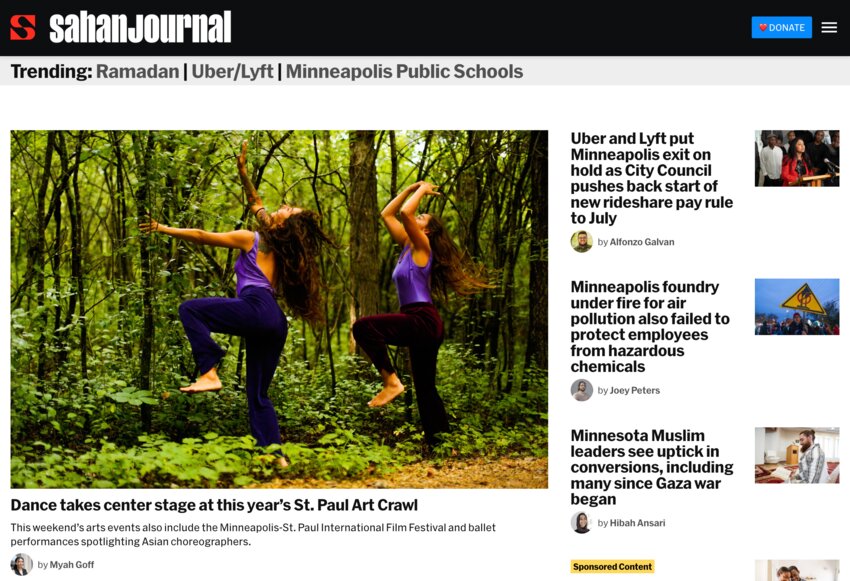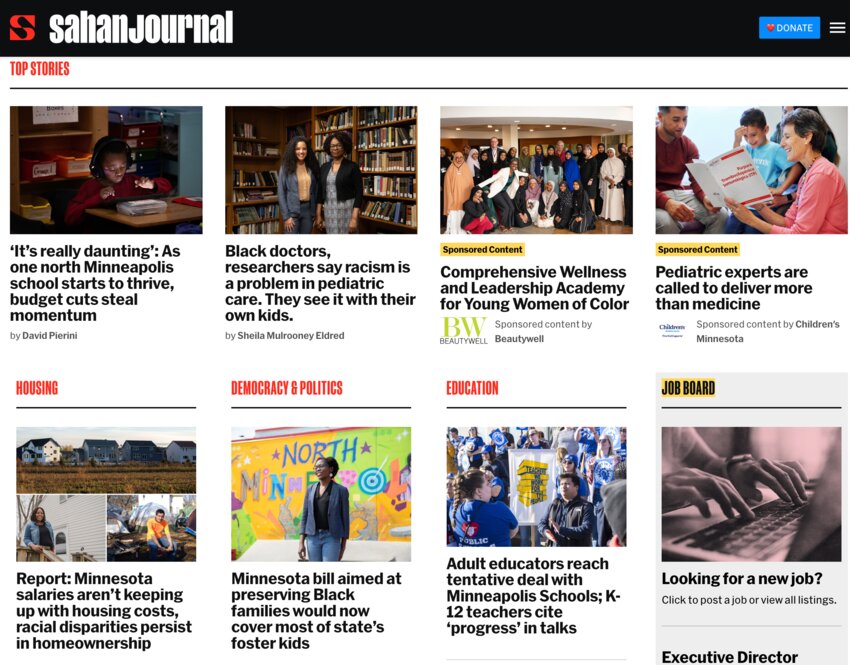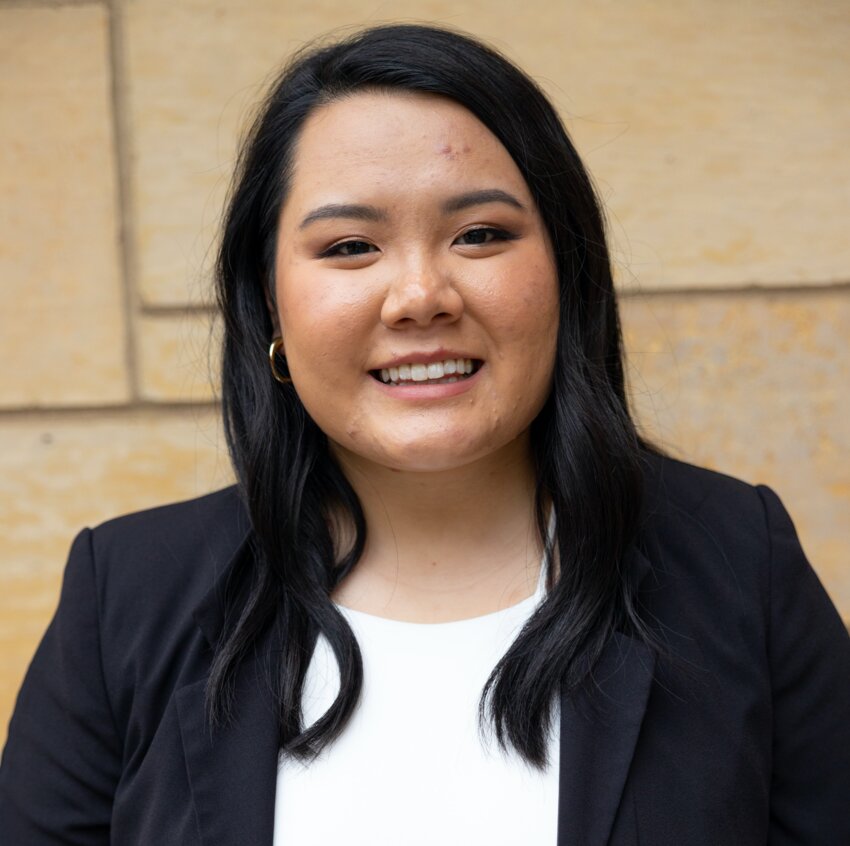In 2019, the Sahan Journal was established as a nonprofit media operation led by veteran journalist Mukhtar M. Ibrahim. The mission was to provide news to communities of color in and around Minneapolis. Ibrahim noted that many mainstream media organizations didn’t cover immigrant communities at all, and those that did often did more harm than good.
With the help of Minnesota Public Radio — which covered Ibrahim’s salary for the first 18 months while he built the nonprofit’s infrastructure — the Sahan Journal was up and running.
By 2023, the operation had grown to 20 employees with a $2.5 million budget. By October of last year, the organization secured $7.4 million from funders and raised another $2 million from advertising and individual donations. It’s funding a newsroom staffed with people from diverse backgrounds.
“Minnesota is predominantly white, but we also have some of the largest communities of specific ethnicities outside their home continent,” said editorial director Chao Xiong. “We have, I believe, the largest Somali community outside of Africa, the largest Liberian community outside of Africa and the largest urban Hmong population outside of Asia. We also have, I think, the largest urban Native American population in the U.S. So, we have very strong communities that are really tied to their history, their home countries, people who have built a life here and businesses here who are in all facets of Minnesota life.”

The Sahan Journal covers topics and beats familiar to traditional news outlets, including local government, the environment, criminal justice, the arts, schools and health.
They also produce serious investigative and accountability journalism. Among the stories they’ve covered or broken:
“Ultimately, Sahan is about surfacing stories and voices that haven’t been heard from historically mainstream media,” Xiong said. “It’s about telling stories that have been ignored as that sort of ‘holding government accountable’ to those communities. We still struggle with the real-life balance of getting content out, getting eyeballs on your content and writing deeper reporting stories. … It was a struggle early on to really find the time to do more deep reporting and balance that with the need to get just content out there that every media outlet faces struggles with right now. So, we’re in a space where we can do more accountability reporting.”

“I was heartened and surprised by how much Sahan could compete with other news outlets in Minnesota on so many stories,” he said, particularly referring to the fraud case. “We have people from The New York Times and Reuters flying in to cover that, and we were going toe-to-toe with them.”
Xiong is one of a handful of people taking stronger leadership roles as the Sahan Journal’s founder, Ibrahim, who was 17 years old when he immigrated to Minnesota with his family, has stepped away from the publisher and CEO role. In an article posted to the Sahan Journal’s website, Ibrahim said he wanted to spend more time with his family — he and his wife are parents to three daughters and a son — and because of the solid financial position the Journal has developed since its founding.
“I am proud of the remarkable success story that our dedicated staff has built,” Ibrahim wrote on the website. “We have grown from a four-person newsroom to an amazing and talented team of 20, covering a wide range of essential topics and producing innovative multimedia content. We have built an equitable, transparent and responsive work culture that supports the professional development and well-being of every staff member.”
Xiong, who leads the news team, worked at the Star Tribune for 18 years. In an interview with E&P, he said that the organization continues to grow its revenue through various channels so as not to become too reliant on any one particular source. Part of that includes hosting events. Audience development — as is the case with all news organizations, particularly those without a legacy audience — continues to be a priority.

To that end, Samantha HoangLong’s job is to gain more readers and viewers as the audience growth manager at Sahan Journal. She mainly focuses on social media, including expanding content offerings on TikTok, Instagram, Facebook and Twitter and search engine optimization (SEO). She also provides strategic support for newsletter distribution and development. She said the Sahan Journal averages 115,000 page views a month. There is much room to develop a larger following.
“As people follow us on social media, they become more familiar with our work, and then they learn to trust us more, and eventually, down the road, will hopefully consider donating or subscribing to our newsletters, and as they subscribe to our newsletters, we have a direct communication line with them where we can ask for donations and so basically moving them down the funnel,” HoangLong said. “I am mostly editorial, but I’m also always thinking of how the news we produce can channel into funding us.” She said reporters post at least three TikTok videos per week. Audience development and social media strategy is a collaborative effort.
“Something I really value about working at the Sahan Journal is that there’s space to try new things and experiment with ways to deliver news and expand our reach,” she said. “I would encourage other publishers not to be afraid of trying something and failing — you know, just doing their best to experiment with reaching younger and diverse audiences because that’s the next generation of readers, right?”
Xiong added similar advice to publishers regarding hiring and news coverage.
“You hear from [mainstream media] managers, ‘we can’t find people of color to quote’ or ‘we can’t find people of color to hire,’ but Sahan has proven that it’s easy to find those people to interview,” Xiong said. “They’re everywhere. We find doctors of color easily, committee members of color easily and advocates of color easily. We find plenty of journalists of color to hire. They’re out there, but it’s about making the time and effort to reach them, find them and cultivate those relationships.”
 Bob Miller has spent more than 25 years in local newsrooms, including 12 years as an executive editor with Rust Communications. Bob also produces an independent true crime investigative podcast called The Lawless Files.
Bob Miller has spent more than 25 years in local newsrooms, including 12 years as an executive editor with Rust Communications. Bob also produces an independent true crime investigative podcast called The Lawless Files.
1 comment on this item Please log in to comment by clicking here
kramerd
Glad to see this story has been updated. The original story said Missouri Public Radio helped in the beginning. That made no sense whatsoever.
Monday, June 3 Report this